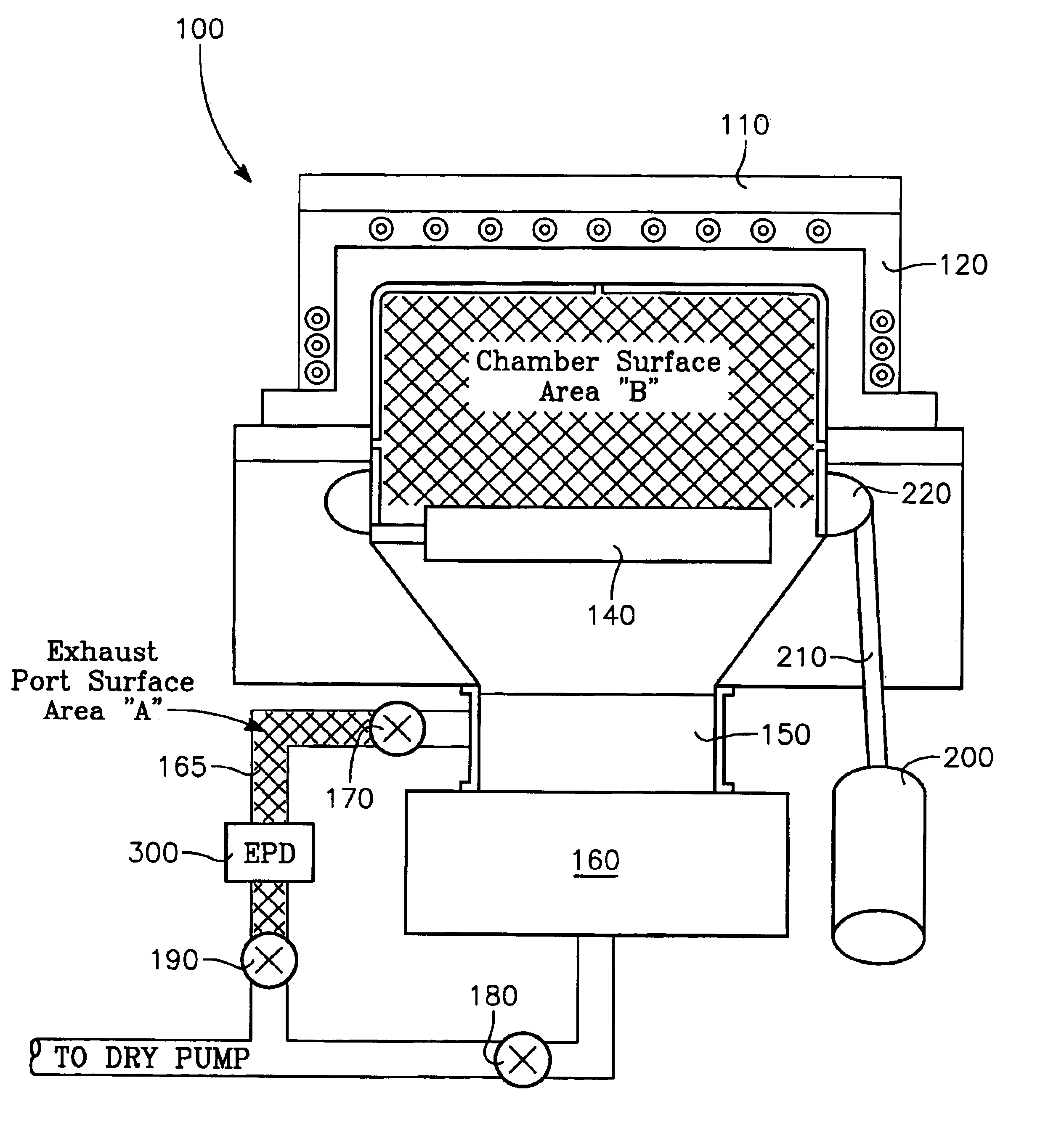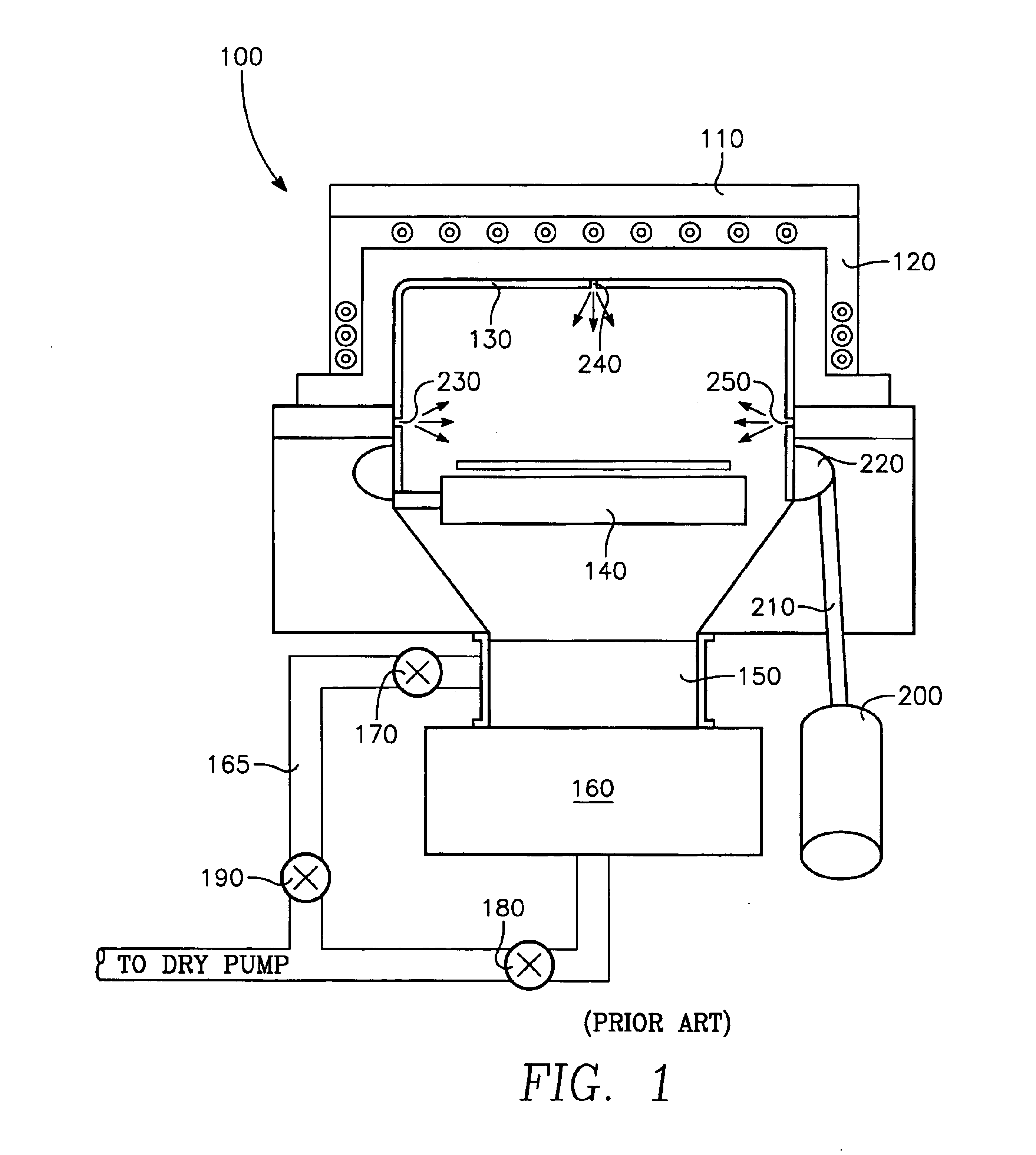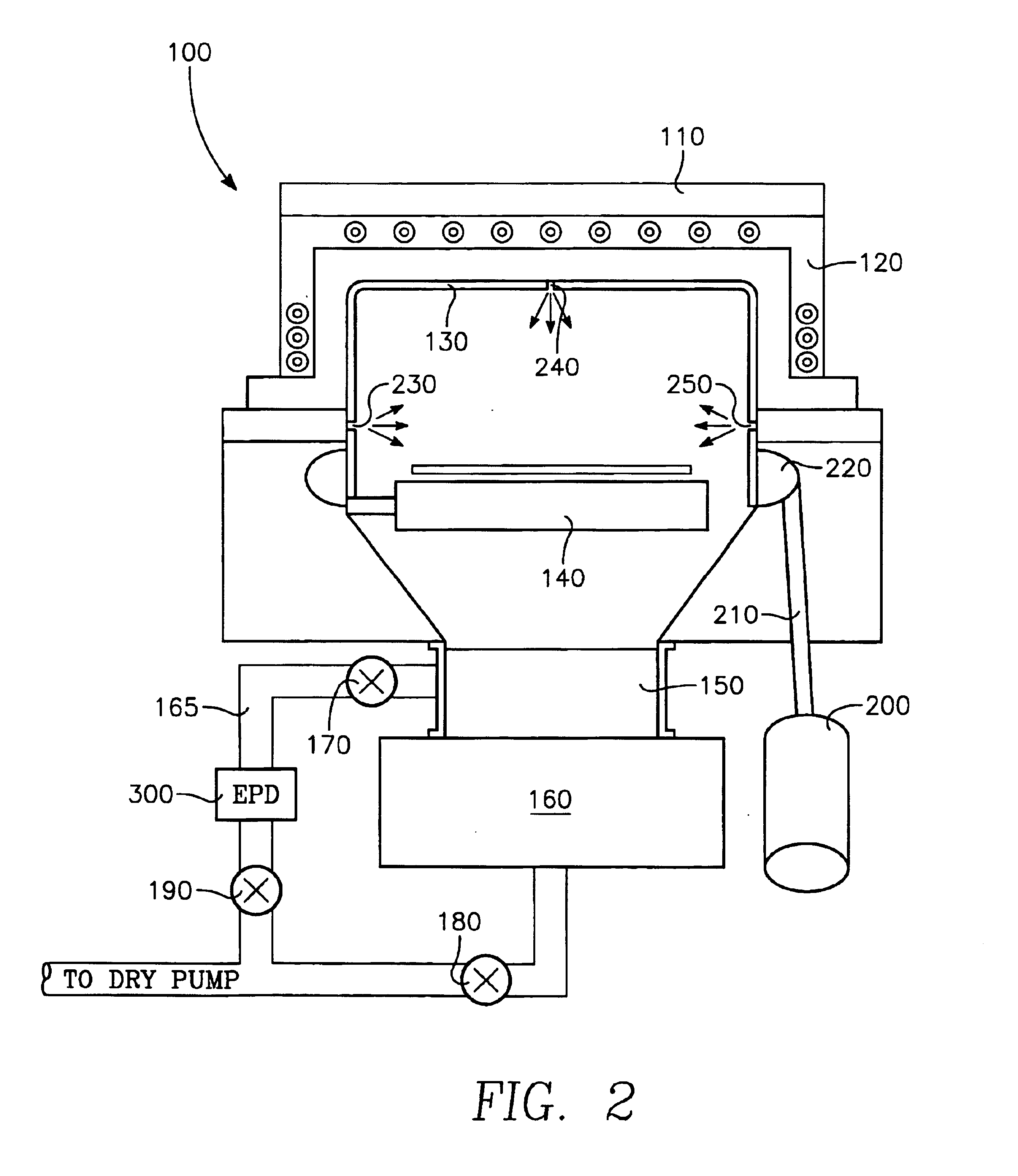Process endpoint detection in processing chambers
a technology of processing chambers and endpoint detection, applied in the direction of liquid cleaning, electrical discharge tubes, semiconductor/solid-state device testing/measurement, etc., can solve the problems of unreliable by-time algorithms, deterioration of these interior components, and the cleaning process of plasma
- Summary
- Abstract
- Description
- Claims
- Application Information
AI Technical Summary
Benefits of technology
Problems solved by technology
Method used
Image
Examples
Embodiment Construction
FIG. 6 is a graph that shows particle adders as a function of undercleaning or overcleaning high density plasma, chemical vapor deposition (“HDP CVD”) processing chamber 100 shown in FIG. 1 (The term particle adders as used herein refers to particles that are added to a wafer as a result of performing a processing step on the wafer. For example, one might measure the number of particles on the wafer prior to undergoing the processing step, and measure the number of particles on the wafer after undergoing the processing step. The difference in the two numbers is a number of particle adders.). As was described in the “Background of the Invention,” a typical cleaning process for an HDP CVD processing chamber manufactured by Applied Materials, Inc. of Santa Clara, Calif. (“Applied”) is a “dark” cleaning process, i.e., a chemical process wherein a plasma is formed remotely, i.e., external to chamber 100, and wherein the remotely generated plasma is admitted to chamber 100 to perform the ...
PUM
 Login to View More
Login to View More Abstract
Description
Claims
Application Information
 Login to View More
Login to View More - R&D
- Intellectual Property
- Life Sciences
- Materials
- Tech Scout
- Unparalleled Data Quality
- Higher Quality Content
- 60% Fewer Hallucinations
Browse by: Latest US Patents, China's latest patents, Technical Efficacy Thesaurus, Application Domain, Technology Topic, Popular Technical Reports.
© 2025 PatSnap. All rights reserved.Legal|Privacy policy|Modern Slavery Act Transparency Statement|Sitemap|About US| Contact US: help@patsnap.com



